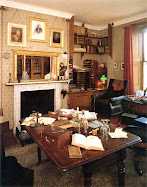The information needed to understand the FRQ for this week can be found in chapter 14 on pages 239-247. Take time to learn the vocabulary and Mendel's laws of segregation and independent assortment. Becoming familiar with terms such as P generation, true-breeding, allele, and others is essential in order to understand the genetics problems. Next week you will receive questions that cover the second part of chapter 14. I will be monitoring the blog this weekend so if you have questions be sure to write and remember that you can help each other. Finally, welcome Jonathan Richardson to the blog, read his post, and ask him questions.
Mr. Baker
The Atmospheric River Event is Ending--- And ANOTHER One is Predicted
-
The heavy rainfall is over, but some rivers are still rising. The most
impactful atmospheric river event of the past few decades.
Consider the 5-day ra...
1 day ago




10 comments:
Awsome okay.... MR. Baker or anyone i have a question on NUMBER 9!!!! PART C
IT READS: the man is an albino and the girls family includes no albinos for at least three generations....
OKAYYYY????? the man is naturally (aa) but what about the woman? she could either still have the gamete (a) or not... she could have lost it somewhere along the way!!!! or kept it!! so i am a little lost... without the woman gamete pairs i cant find the probability for the child!!!
Did i sound a little desperate?? because I AM!!! i am probably not reading this right but either way i dont get it.... SOMEONE???
Mr. Baker, on number 1 (part a) that we went over in class, the phenotypic ratio is 4:0, is 4 the chance of seeds that may be wrinkled or seeds that may be round? But aren't wrinkled the recessive alleles?
Anna,
When a genetic problem says something like - "and the women's family includes no albinos for at least three generations..." this is telling you that it is highly unlikely that the woman is carrying the albino gene and shoul be considered "AA".
Ca,
Considering problem 1, when RR is crossed with rr, all the offspring will be Rr and therefore show the round phenotype. Because all offspring will be Rr, then you would expect that non of the offspring will be wrinkled.
AHA okay... that makes sense.
also for the dihybrid crosses should there be 4 pairs of gametes or 16??
Oh ok^^ I got it... Thanks!
Ana,
If I follow you, there should be four. For example, if you have an individual with an AaBb genotype the principle of independent assortment says that all combinations of alleles will be found in the gametes but for pairs of the same allele. So an AaBb parent will produce AB, Ab, aB, and ab alleles at a 0.25 (25%) frequency each.
Now when you cross AaBb x AaBb you will habe a Punnett square that has four squares on a side and 16 squares total.
So basically I thought the packet was going to be easy and now I'm crying deep deep down on the inside because I'm pretty sure I did all of them wrong.
Sigh!
Yes indeed. I figured as much since I have not heard from most of you. I suspect that there is a great deal of gnashing of teeth and pulling of hair. So it goes with genetics. Any questions???
I have been trying all night (including the weekend) and all morning and I can't seem to get the dihybrid Punnett square right. Can you please show us how to do one in class. I have read the example in the book and a few online but when I go to do them myself I get confused.
Post a Comment